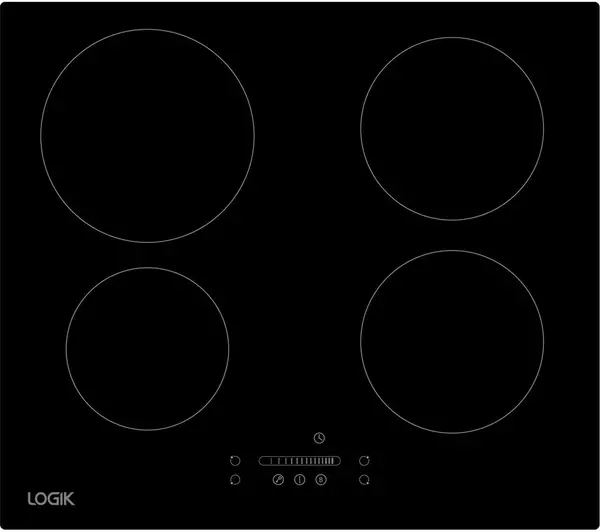Induction vs Gas Hobs Running Costs: a topic that often raises questions and debates amongst homeowners and chefs alike. Choosing the right hob for your kitchen can have a significant impact on your energy bills, cooking experience, and safety.
With the rise of eco-friendly and energy-efficient appliances, induction hobs have become a popular choice for their precision, speed, and safety. However, gas hobs still hold their ground as a classic and reliable option, offering visible flames, precise flame control, and lower upfront costs.
In this article, we will explore the pros and costs of induction and gas hobs, focusing on their running costs and which one is cheaper in the UK. Let’s explore the pros and costs of each type and see which one suits your needs and budget.
Induction Hobs:

LOGIK LINDHOB23 59 cm Electric Induction Hob – Black
Induction hobs use electromagnetism to heat the pan directly, making them more energy-efficient than gas hobs. They are also safer as the hob itself doesn’t get hot, reducing the risk of burns or fires. Other pros include:
- Faster heating and precise temperature control
- Easy to clean and maintain
- Sleek and modern design
However, induction hobs have higher upfront costs than gas hobs, and not all cookware is compatible with them. You need pans with a ferrous metal base, such as cast iron or stainless steel, to work with an induction hob. Other cons include:
- Louder buzzing noise when in use
- Limited choice of cookware
- Potential electromagnetic interference with nearby electronics
Gas Hobs:

BEKO Pro HIAG64325SX 58 cm Gas Hob – Stainless Steel
Gas hobs use a flame to heat the pan, providing instant heat and visible flames that some cooks prefer. They are also cheaper to buy and install than induction hobs. Other pros include:
- Suitable for all types of cookware
- Precise flame control for cooking techniques such as wok cooking
- No electrical connection required
However, gas hobs are less energy-efficient and more expensive to run than induction hobs. They also pose a higher risk of gas leaks or fires, and the flame can blacken the underside of pans. Other cons include:
- More difficult to clean and maintain
- Limited design options
- Risk of carbon monoxide poisoning if not properly ventilated
Induction vs Gas Hob Running Costs:

When it comes to running costs, induction hobs are generally cheaper than gas hobs. According to the Energy Saving Trust, an induction hob costs around £25 per year to run, while a gas hob costs around £40-£60 per year, depending on usage.
However, the initial cost of buying and installing an induction hob can be higher than a gas hob. A basic induction hob can cost around £300, while a gas hob can cost as little as £100.









